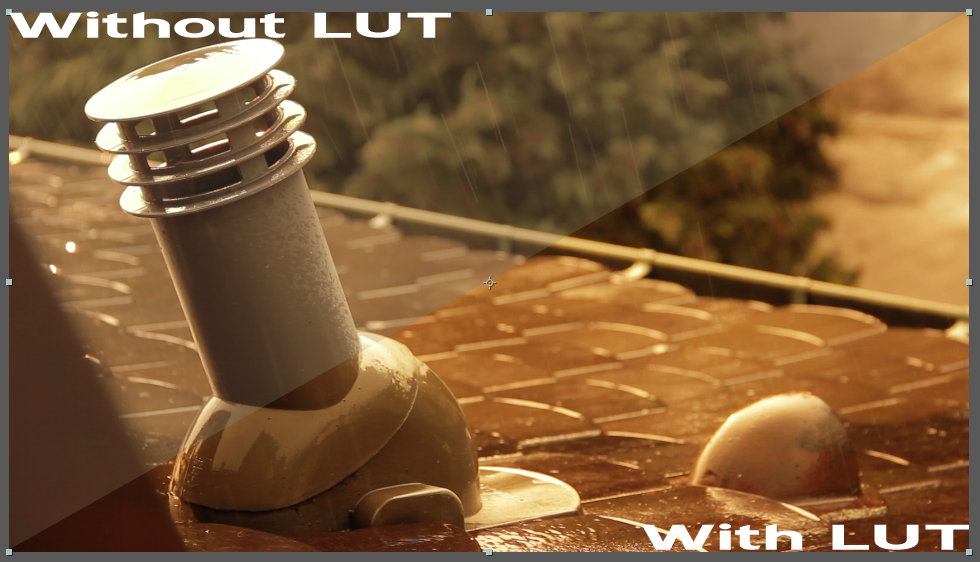Picture Style Canon Cinestyle 600d Download
When you see a film in the theater, you’re looking at footage that has been professionally color corrected and graded to give a stunning result. But film straight out of the camera is actually a fairly flat image with far less contrast, sharpness, and color.
In order to get cool tinted effects, you need to shoot with a flat picture setting. Basically, this means everything is super desaturated, has low contrast, and generally doesn't look that great. However, that's just where the magic begins, and you can get this style by downloading the Technicolor CineStyle setting for your camera. External link. You'll have to sign up to download this style, but it's cool. Marvels Cine Picture Style v3.4 - This is another well used, and well documented PP and style that a lot of people use. It is definitely not as flat as Technicolor's Cinestyle but offers a. But if you're running into issues with it not registering the user defined style, or you just don't feel comfortable trying it without guidance, this video step by step tutorial should take care.
Starting with a flatter image gives editors more flexibility in post production, and maximizes the dynamic range potential of every shot. In this segment we show you how to get a flatter image out of your DSLR camera using picture styles. You’ll learn how they work, what settings you can modify in camera, and how to install custom styles widely used by professional DSLR shooters. Getting a flatter image out of your camera can help you squeeze out that extra bit of dynamic range and detail, and get you great looking results.
Video Transcript. When you see a film in the theater, you’re looking at footage that has been professionally color corrected and graded to give a stunning result. But film straight out of the camera is actually a fairly flat image with far less contrast, sharpness, and color. Starting with a flatter image gives editors more flexibility in post production, and maximizes the dynamic range potential of every shot. In this segment we show you how to get a flatter image out of your DSLR camera using picture styles. You’ll learn how they work, what settings you can modify in camera, and how to install custom styles widely used by professional DSLR shooters. Getting a flatter image out of your camera can help you squeeze out that extra bit of dynamic range and detail, and get you great looking results.
Since the advent of the camcorder, video producers have used every trick in the book to make their video look more like film. While shooting and lighting techniques can take you far, using picture styles on a DSLR can get you one step further. In order to understand how picture styles work, you need to understand a little about how a camera produces an image. After light hits your sensor, that data is processed and then compressed. That “processing” step uses the picture style setting in order to determine how your image information is altered before your image is compressed. DSLR cameras come with preset Picture styles such as standard, portrait, landscape, neutral, and more.
Each of these preset styles will produce a different video image. You can customize each preset in camera to gain more control over important facets of your image including sharpness, contrast, saturation, and color tone. By default, most cameras will probably be set to standard mode. Typically the goal of this setting is to give you a highly saturated, high contrast, sharp image that needs little to no adjustment. The tradeoff is a loss of some dynamic range and detail, with very little flexibility with sharpness and color in post production. Let’s take a look at some examples. Keep in mind there may be some loss of detail due the final compression for the web or video.
Here’s a test shot with a canon 5d mark III, with a waveform monitor beside it. It’s shot a f6.3, with a 640 ISO. Taking a look at our shot and waveform, you can see that the brightest highlights in this shot are over 100 ire, and that we’re losing some of the detail. if you’re a plus member, you can check out more on using scopes and color correction by clicking the color correction for film link. Here’s the same shot using the neutral picture style without any additional adjustments. Notice how the contrast, color intensity, and sharpness are slightly reduced.

Not a truly dramatic change, but it’s a move toward a flatter image. Adding a bit of a sharpen filter and adjusting our curves can bring in the detail and color of the standard preset, without losing the extra detail. Color correction is a big part of video post-production, so check out the color correction 101 link if you’re interested in learning more about it. Now let’s take one more simple step to get back a bit more from our image by altering the neutral style to be a bit more flat. On the 5d mark III, we’ll hit our menu button, and go to our picture style setting, which you’ll find in the shoot 3 menu. Now we’ll scroll down to user defined 1 and hit info to change it.
The first step is to choose the picture style we want to modify. In this case, we’ll choose neutral. Notice that sharpness is already set to 0, and use the scroll wheel to highlight contrast, and hit set. Let’s take the contrast all the way to the left. Now we’ll repeat the process and take our saturation two steps to the left. This “neutral flat” is a setting used by many top dslr shooters.
Here’s our shot with the unmodified neutral style again, and here’s the shot with our neutral flat style. Looking at the brightest highlights such as the posts on our xylophone and our chart, you can see we’re able to make out a bit more detail. And the transitions between our darker and lighter areas is a bit more gradual. Our color is less saturated and our sharpness is toned down. This flatter image leaves more room for manipulation in post. Simply modifying your in camera settings can bring back some detail, and provide more flexibility for color grading, but if you’re really trying to squeeze every drop of detail out of your camera, you’ll have to dive deeper into the pool and use the picture style editor to create completely custom looks.
It should be noted that this software is not very intuitive, and can be extremely frustrating to work with. Luckily for us, there are already some great picture style presets you can download that have been carefully designed and battle-tested. Two of the most popular are the technicolor cinestyle preset and the marvels film preset. You can find these by clicking on the links. To load a user-defined style, you’ll need to have your EOS utility software installed.
And you’ll have to have your camera in photo mode. Next, hook up your canon via the usb cable, then select the camera settings/remote shooting option in the EOS utility interface. Now click the register user defined style option. Select the user defined two tab and click on the import file icon.
Navigate to your downloaded preset and select it, then click ok. You can repeat this process for the user defined 3 tab to add another preset. Once you’re done, simply unhook your camera from the computer, and navigate to the picture style menu to select your imported presets. Let’s start with the technicolor cinestyle preset.

There’s a lot of debate about how flat is too flat, and this style is widely considered to be at the extreme end of the spectrum. Here’s the shot with the neutral flat shot we modified in camera, and here’s the same shot using the technicolor cinestyle preset. We have picked up a tremendous amount of highlight and shadow detail that was nonexistent.
The black levels have been lifted significantly as well. Of course, it’s clear to see that this flat image is not meant to be a “ready made” look, and we’ll need to do some basic color correction as well as sharpness adjustments to get the shot to look the way we want. Here’s the technicolor shot after some simple color grading. The real advantage here is that we’re able to control our contrast, sharpness, and saturation levels to meet our needs. Attempting to get the same look from the standard preset would result in a picture with far less detail. If you’re looking for something a bit more balanced, but still a significantly flatter look, you can use the marvels film style a try Here’s our neutral flat test shot, and here’s the same shot with the marvels film style. You can see that this style maintains the upper highlights, with a fairly even distribution of the midtones. The black levels have been maintained with a smaller boost than the technicolor option.
Here’s the shot after some basic color correction, you can see that this preset can also deliver great results. So what’s the bottom line?
Cinestyle Download

How much more dynamic range are we really getting out of these presets? In order to get all our our highlights into our shot using the standard picture style, our f/stop is at 8.0, while in our marvels and cinestyle presets, we were able to shoot at f6.3. That’s 2/3rds of a stop more dynamic range in the brightest portions of your scene. Our flat neutral setting requires an f/stop of 7.1 to retain our highlights, which is a 1/3rd stop increase at the top of our dynamic range.
This alone may well be worth a little extra time in post for some shooters. But you can’t forget that these alternative styles also give more flexibility with your saturation and sharpness that you simply don’t have with a standard preset. It will also be easier to match a flatter shot with footage shot on other cameras. Let’s take a final look at these custom designed presets with two additional shot. The first is a backlit shot of our talent. Here is the standard look, shot at f4.5, side by side with the cinestyle look. Notice the extra detail we can make out on our talent’s face.
You can also see the difference in the waveform monitor. Now here’s the standard shot compared to the marvels preset.
Again we’ve picked up detail in the shadows that would have been lost, and the waveform reflects it. Finally, here’s a high contrast outdoor shot on standard. Pay close attention to the shadows and highlights. Heres our neutral flat setting. And finally cinestyle. Switching from cinestyle back to standard really shows the difference. If you want to retain control over your footage, and you’ve got the time and patience for the post-production process, working with flat picture styles can help you keep that extra bit of detail and quality. Of course, every camera is different, and every variation in picture style is going to give different results, so go out there and experiment to find the one that works for you.
Thanks for watching.